

#1: Elephants on Acid
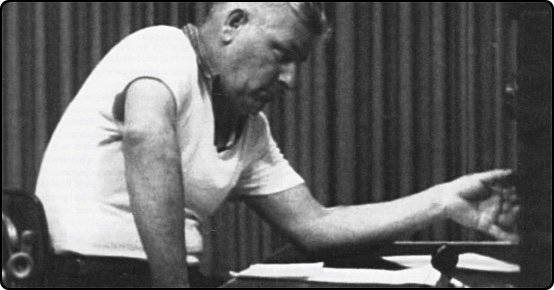
#2: The Obedience Experiment
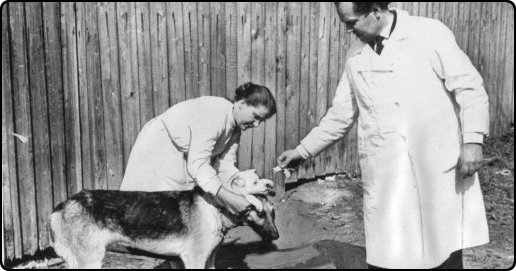
#3: Demikhov’s Two-Headed Dogs
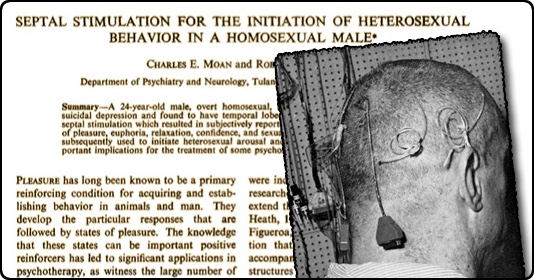
#4: The Initiation of Heterosexual Behavior in a Homosexual Male
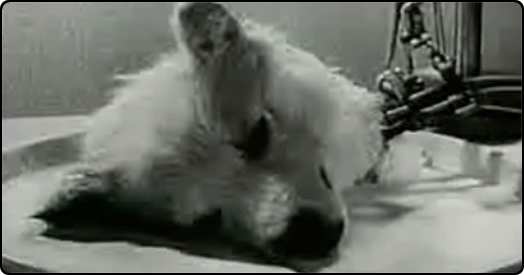
#5: The Isolated Head of a Dog
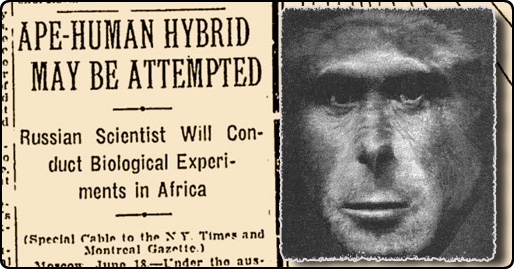
#6: Human-Ape Hybrid
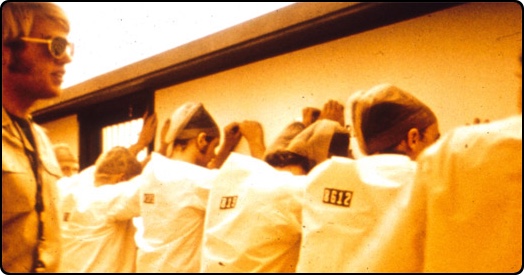
#7: The Stanford Prison Experiment
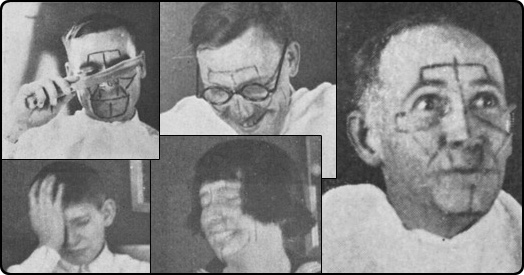
#8: Facial expressions while decapitating a rat
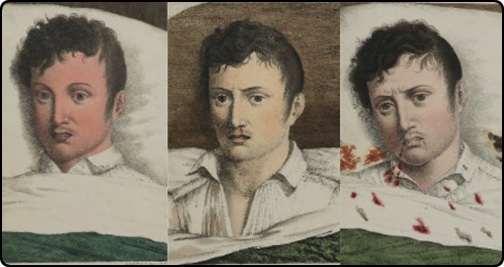
#9: The Vomit-Drinking Doctor
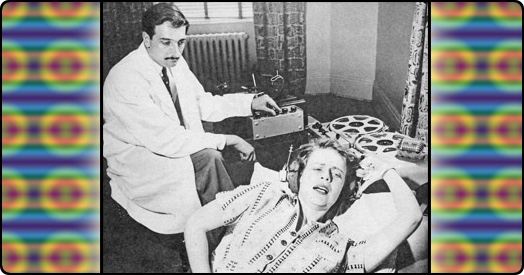
#10: Beneficial Brainwashing
10 of the weirdest experiments of 2021
Brains grown in petri dishes, self-replicating zombies and the invention of otherworldly time crystals.

Every year, scientists undertake some truly baffling experiments, and 2021 was no exception. From growing mini-brains with their own eyes in petri dishes to reanimating 24,000-year-old self-replicating zombies from the Siberian permafrost, here are the absolute weirdest scientific experiments of the year.
Growing miniature human brains with their own eyes
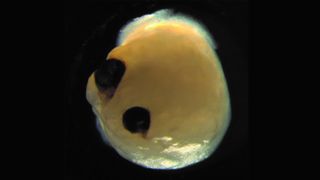
In August, a group of scientists made news that was equal parts fascinating and horrifying when they announced they had successfully lab-grown a tiny human brain with its own pair of eyes. They made the Cronenberg-esque mini brain, called an organoid, by transforming stem cells into neural tissue, then stimulating the cells with chemical signals to form tiny rudimentary "optic cups" filled with light-sensitive cells.
Thankfully for our collective sanity and for the mini-brains themselves, the tiny organoids don't have nearly enough neural density to be conscious — so they won't be asking themselves anytime soon how they awakened as a lost pair of eyes sliding around a petri dish. They are, however, incredibly useful constructs for studying brain development and potentially creating cures for retinal disorders that cause blindness — something that the researchers want to study.
Read more: Lab-made mini brains grow their own sets of 'eyes'
Finding that crows understand the concept of zero
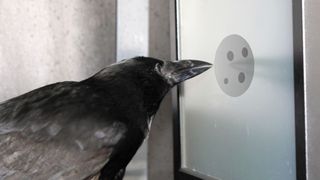
If the Cronenburg body-horror of the last entry didn't move you, this year also saw scientists reveal an experiment more in line with Hitchcock's classic horror film "The Birds" — proving that crows were smart enough to understand the concept of zero. The concept of zero, ostensibly developed by human societies somewhere in the fifth century A.D., requires abstract thinking. So it came as quite a surprise when a June paper in The Journal of Neuroscience revealed that crows not only picked zero as distinct from other numbers, but also associated it more readily with the number one than with higher numbers.
Scans of the birds' brain activity during the experiments showed that crows have specially tuned neurons for understanding the null number, but what they use those brain cells for (besides potentially plotting to take over the world, of course) is a mystery. The scientists were amazed that both human and crow brains can compute zero even though we shared our last common ancestor with birds well before the extinction of the dinosaurs; this shows that evolution takes multiple routes to create brains with the same higher-level functions.
Read more: Crows understand the 'concept of zero' (despite their bird brains)
Sign up for the Live Science daily newsletter now
Get the world’s most fascinating discoveries delivered straight to your inbox.
Figuring out why brazil nuts rise to the top of the bag

April saw researchers finally finding the answer to one of humanity's most pressing questions: Why do Brazil nuts rise to the top of the bag? The nutty mystery was resolved by shaking a mixture of peanuts and Brazil nuts, with the Brazil nuts placed at the bottom, and taking a 3D X-ray scan of the bag after each shake. It turned out that successive shakes eventually moved the larger nuts into a vertical orientation, after which every shake forced them upwards. The scientists believe their research could help engineers design better ways to prevent size segregation from occurring in other mixtures — something that, while vitally important for bags of nuts, could have essential applications in medicine and construction.
Read more: 'Brazil nut puzzle' cracked by researchers
Creating a mutant "daddy shortlegs"

By switching off certain genes in the daddy longlegs , scientists created a stunted "daddy shortlegs" version — but why? By shortening the famous arachnid's legs, the researchers hoped to reveal the secrets behind its body plan as well as its unique method of locomotion: walking with three pairs of legs and waving the longest pair about to feel its way around.
After the gene tweak, the legs of the stunted daddy shortlegs had not only changed in size, but also in shape; they morphed into short food-manipulating appendages called pedipalps. This offered the scientists a glimpse back in time at the kinds of creatures that daddy longlegs could have evolved from 400 million years ago. And this isn't the last mutant arachnid the scientists want to create; they also plan to mutate spider fangs to glean similar insights into their evolution.
Read more: Mutant 'daddy shortlegs' created in a lab
Turning water into a shiny golden metal
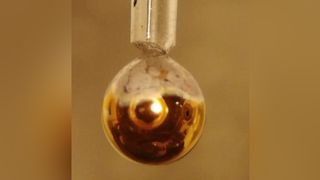
From early antiquity all the way to the 17th century, alchemists were obsessed with the philosopher's stone: a mythical substance with the power to transmute lead into gold . In July, scientists reported an experiment that looked a little like the fabled process: for just a few fleeting seconds, they were able to transform water into a shiny, golden metal. The researchers achieved this by mixing the water with sodium and potassium — metals which donate their extra electrons to the water, and therefore make the water's electrons wander freely, rendering it metallic. The briefly metallic water they created could provide scientists with some key insights into the highly-pressurized hearts of planets, where water could be squished so intensely that this process occurs naturally.
Read more: Scientists transform water into shiny, golden metal
Inventing an otherworldly time crystal

In July, researchers working with Google revealed that they had created a time crystal inside the heart of the tech giant's quantum computer, Sycamore. The crystal was a completely new phase of matter that the researchers claimed was able to evade the second law of thermodynamics , which dictates that entropy, or the disorder of a system, must always increase. Unlike other systems, which see their entropy increase over time, the time crystal's entropy did not increase no matter how many times it was pulsed with a laser. The truly remarkable thing about the weird quantum crystals is that they are the first objects to break a fundamental symmetry of the universe, called discrete time-translation symmetry. Scientists are hoping to use the otherworldly crystals to test the boundaries of quantum mechanics — the strange rules that govern the world of the very small.
Read more: Otherworldly 'time crystal' made inside Google quantum computer could change physics forever
Reviving 24,000-year-old zombies from Russian permafrost
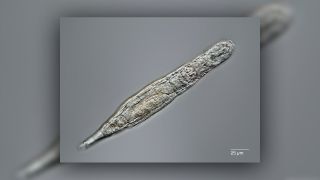
If you were to find a group of zombies from the Pleistocene epoch frozen inside Siberian permafrost, reviving and cloning them is probably not high on your agenda. However, that's exactly what scientists described in a June paper published in the journal Current Biology . Thankfully, these zombies aren't the shambling, fictitious brain-eaters popularized by George Romero, but are instead tiny multicellular organisms called bdelloid rotifers. Once thawed, the tiny creatures began reproducing asexually through a process called parthenogenesis, creating perfect clones of themselves. Remarkably, analysis of the soil around the creatures showed that they had been frozen for 24,000 years, and they had survived by putting themselves inside a protective stasis called cryptobiosis. Scientists are hoping to study this clever trick to better understand cryopreservation and how it could be adapted for humans.
Read more: 24,000-year-old 'zombies' revived and cloned from Arctic permafrost
Drilling the deepest ocean borehole ever in the Pacific Ocean

In May, scientists working off the coast of Japan used a long, thin drill called a giant piston corer to drill a 5 mile (8,000 meter) hole to the bottom of the Japan Trench. The scientists then extracted a 120-foot-long (37 m) sediment core from the bottom of the sea, hauling it all the way back up to their ship. The researchers wanted to examine the sediment core because they were searching for clues into the region's earthquake history — the drill site is located very close to the epicenter of the magnitude-9.1 Tohoku-oki earthquake. The 2011 quake caused an enormous tsunami that smashed into the Fukushima Daiichi nuclear power plant and caused a devastating meltdown.
Read more: Scientists just dug the deepest ocean hole in history
Releasing a 'Russian doll' set of stomach-bursting parasites
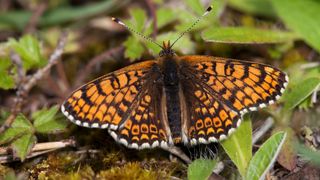
A July study published in the journal Molecular Biology revealed that an already weird past study had produced even weirder unintended consequences. Decades ago, the Finnish scientist Ilkka Hanski introduced the Glanville fritillary butterfly onto the remote island of Sottunga, planning to study how a population of one species placed inside a harsh habitat could survive. Little did he know, the butterflies harbored a species of stomach-bursting parasitic wasp, and those wasps also carried their own, smaller, stomach-bursting hyperparasite — itself a parasitic wasp. Once the butterflies were released on Sottunga, the wasps erupted, spreading across the island with their hosts. This experiment provided later scientists with not only a fascinating ecological study, but also a clear warning that we must understand the ecological webs that form around endangered species before introducing them into new environments.
Read more: 'Russian doll' set of stomach-bursting parasites released inside butterfly on remote Finnish island
Growing magic mushrooms in the blood through an ill-advised injection

Okay, so this one wasn't done by a scientist, but it's by far one of the weirdest amatuer experiments we've heard this year. A January study in the Journal of the Academy of Consultation-Liaison Psychiatry revealed that a man who had brewed a "magic mushroom" tea and injected it into his body ended up in the emergency room with the fungus growing in his blood. After injecting the psilocybin tea, the man, who had hoped to relieve symptoms of bipolar disorder and opioid dependence, quickly became lethargic, his skin turned yellow and he started vomiting blood. The man survived, but needed to take antibiotics and antifungal drugs to remove the psychoactive fungus from his bloodstream. He also had to be put onto a respirator. A growing body of research indicates that psilocybin, the psychoactive compound found in magic mushrooms, could be a promising treatment for depression , anxiety and substance abuse — but only if taken safely.
Read more: 'Magic mushrooms' grow in man's blood after injection with shroom tea
Originally published on Live Science.
Ben Turner is a U.K. based staff writer at Live Science. He covers physics and astronomy, among other topics like tech and climate change. He graduated from University College London with a degree in particle physics before training as a journalist. When he's not writing, Ben enjoys reading literature, playing the guitar and embarrassing himself with chess.
Large Hadron Collider finds 1st evidence of the heaviest antimatter particle yet
James Webb telescope uncovers massive 'grand design' spiral galaxy in the early universe — and scientists can't explain how it got so big, so fast
'Alien plant' fossil discovered near Utah ghost town doesn't belong to any known plant families, living or extinct
Most Popular
- 2 James Webb telescope uncovers massive 'grand design' spiral galaxy in the early universe — and scientists can't explain how it got so big, so fast
- 3 'Alien plant' fossil discovered near Utah ghost town doesn't belong to any known plant families, living or extinct
- 4 'Truly extraordinary' ancient offerings, including statues of snakes and a child priest, found submerged in 'healing' spring in Italy
- 5 Killer squirrels have developed taste for flesh — and voles are running for their lives
We have emailed you a PDF version of the article you requested.
Can't find the email?
Please check your spam or junk folder
You can also add [email protected] to your safe senders list to ensure you never miss a message from us.
20 Awesome Science Experiments You Can Do Right Now At Home
Complete the form below and we will email you a PDF version
Cancel and go back
IFLScience needs the contact information you provide to us to contact you about our products and services. You may unsubscribe from these communications at any time.
For information on how to unsubscribe, as well as our privacy practices and commitment to protecting your privacy, check out our Privacy Policy
Complete the form below to listen to the audio version of this article
Advertisement
Subscribe today for our Weekly Newsletter in your inbox!
Morenike Adebayo
Guest Author
DOWNLOAD PDF VERSION

We can all agree that science is awesome. And you can bring that awesomeness into your very own home with these 20 safe DIY experiments you can do right now with ordinary household items.
1. Make Objects Seemingly Disappear Refraction is when light changes direction and speed as it passes from one object to another. Only visible objects reflect light. When two materials with similar reflective properties come into contact, light will pass through both materials at the same speed, rendering the other material invisible. Check out this video from BritLab on how to turn glass invisible using vegetable oil and pyrex glass.
2. Freeze Water Instantly When purified water is cooled to just below freezing point, a quick nudge or an icecube placed in it is all it takes for the water to instantly freeze. You can finally have the power of Frozone from The Incredibles on a very small scale! Check out the video on this "cool" experiment.
3. Create Oobleck And Make It Dance To The Music Named after a sticky substance in a children’s book by Dr Seuss , Oobleck is a non-Newtonian fluid, which means it can behave as both a solid and a liquid. And when placed on a sound source, the vibrations causes the mixture to gloopily dance. Check out these instructions from Housing A Forest on how to make this groovy fluid funk out in every way.
4. Create Your Own Hybrid Rocket Engine With a combination of a solid fuel source and a liquid oxidizer, hybrid rocket engines can propel themselves. And on a small scale, you can create your own hybrid rocket engine, using pasta, mouthwash and yeast. Sadly, it won’t propel much, but who said rocket science ain’t easy? Check out this video from NightHawkInLight on how to make this mini engine.
5. Create "Magic Mud" Another non-Newtonian fluid here, this time from the humble potato. "Magic Mud" is actually starch found in potatoes. It’ll remain hard when handled but leave it alone and it turns into a liquid. Make your own “Magic Mud” with this video.
6. Command The Skies And Create A Cloud In A Bottle Not quite a storm in a teacup, but it is a cloud in a bottle. Clouds up in the sky are formed when water vapor cools and condenses into visible water droplets. Create your own cloud in a bottle using a few household items with these wikiHow instructions .
7. Create An Underwater Magical World First synthesized by Adolf van Baeyer in 1871, fluorescein is a non-toxic powder found in highlighter pens, and used by NASA to find shuttles that land in the sea. Create an underwater magical world with this video from NightHawkInLight .
9. Make Your Own Lava Lamp Inside a lava lamp are colored bubbles of wax suspended in a clear or colorless liquid, which changes density when warmed by a heating element at the base, allowing them to rise and fall hypnotically. Create your own lava lamp with these video instructions.
10. Create Magnetic Fluid A ferrofluid is a liquid that contains nanoscale particles of metal, which can become magnetized. And with oil, toner and a magnet , you can create your own ferrofluid and harness the power of magnetism!
12. Make Waterproof Sand A hydrophobic substance is one that repels water. When sand is combined with a water-resistant chemical, it becomes hydrophobic. So when it comes into contact with water, the sand will remain dry and reusable. Make your own waterproof sand with this video .
13. Make Elephant's Toothpaste Elephant’s toothpaste is a steaming foamy substance created by the rapid decomposition of hydrogen peroxide, which sort of resembles giant-sized toothpaste. Make your own elephant’s toothpaste with these instructions.
14. Make Crystal Bubbles When the temperature falls below 0 o C (32 o F), it’s possible to freeze bubbles into crystals. No instructions needed here, just some bubble mix and chilly weather.
15. Make Moving Liquid Art Mixing dish soap and milk together causes the surface tension of the milk to break down. Throw in different food colorings and create this trippy chemical reaction.
16. Create Colourful Carnations Flowers absorb water through their stems, and if that water has food coloring in it, the flowers will also absorb that color. Create some wonderfully colored flowers with these wikiHow instructions .
17. "Magically" Turn Water Into Wine Turn water into wine with this video by experimenter Dave Hax . Because water has a higher density than wine, they can switch places. Amaze your friends with this fun science trick.
18. Release The Energy In Candy (Without Eating It) Dropping a gummy bear into a test tube with potassium chlorate releases the chemical energy inside in an intense chemical reaction. That’s exactly what's happening when you eat candy, kids.
19. Make Water "Mysteriously" Disappear Sodium polyacrylate is a super-absorbent polymer, capable of absorbing up to 300 times its own weight in water. Found in disposable diapers, you can make water disappear in seconds with this video .
20. Create A Rainbow In A Jar Different liquids have different masses and different densities. For example, oil is less dense than water and will float on top of its surface. By combining liquids of different densities and adding food coloring, you can make an entire rainbow in a jar with this video .
There you have it – 20 experiments for you to explore the incredible world of science!
ARTICLE POSTED IN
experiment,
fluorescein,
rocket engine,
hydrogen peroxide,
sodium acetate,
ferrofluid,
More Space and Physics Stories
link to article

The Final Words Of Cosmonaut Vladimir Komarov, The “Man Who Fell From Space”

Moon's Magnetic Field Experienced Mysterious Resurgence 2.8 Billion Years Ago Before Disappearing

This Purple Diamond Microwave Laser Could Be Key To Detecting Future Deep Space Signals

A New North Pole, Bubble-Butt Turtles, And Testing Ancient Hangover Cures

IFLScience The Big Questions: Why Do Humans Love Playing Competitive Games?

What Does Snake Poop Look Like?
Advertisement
10 Outrageous Experiments Conducted on Humans
- Share Content on Facebook
- Share Content on LinkedIn
- Share Content on Flipboard
- Share Content on Reddit
- Share Content via Email

Prisoners, the disabled, the physically and mentally sick, the poor -- these are all groups once considered fair game to use as subjects in your research experiments. And if you didn't want to get permission, you didn't have to, and many doctors and researchers conducted their experiments on people who were unwilling to participate or who were unknowingly participating.
Forty years ago the U.S. Congress changed the rules; informed consent is now required for any government-funded medical study involving human subjects. But before 1974 the ethics involved in using humans in research experiments was a little, let's say, loose. And the exploitation and abuse of human subjects was often alarming. We begin our list with one of the most famous instances of exploitation, a study that eventually helped change the public view about the lack of consent in the name of scientific advancements.
- Tuskegee Syphilis Study
- The Nazi Medical Experiments
- Watson's 'Little Albert' Experiment
- The Monster Study of 1939
- Stateville Penitentiary Malaria Study
- The Aversion Project in South Africa
- Milgram Shock Experiments
- CIA Mind-Control Experiments (Project MK-Ultra)
- The Human Vivisections of Herophilus
10: Tuskegee Syphilis Study

Syphilis was a major public health problem in the 1920s, and in 1928 the Julius Rosenwald Fund, a charity organization, launched a public healthcare project for blacks in the American rural south. Sounds good, right? It was, until the Great Depression rocked the U.S. in 1929 and the project lost its funding. Changes were made to the program; instead of treating health problems in underserved areas, in 1932 poor black men living in Macon County, Alabama, were instead enrolled in a program to treat what they were told was their "bad blood" (a term that, at the time, was used in reference to everything from anemia to fatigue to syphilis). They were given free medical care, as well as food and other amenities such as burial insurance, for participating in the study. But they didn't know it was all a sham. The men in the study weren't told that they were recruited for the program because they were actually suffering from the sexually transmitted disease syphilis, nor were they told they were taking part in a government experiment studying untreated syphilis, the "Tuskegee Study of Untreated Syphilis in the Negro Male." That's right: untreated.
Despite thinking they were receiving medical care, subjects were never actually properly treated for the disease. This went on even after penicillin hit the scene and became the go-to treatment for the infection in 1945, and after Rapid Treatment Centers were established in 1947. Despite concerns raised about the ethics of the Tuskegee Syphilis Study as early as 1936, the study didn't actually end until 1972 after the media reported on the multi-decade experiment and there was subsequent public outrage.

9: The Nazi Medical Experiments

During WWII, the Nazis performed medical experiments on adults and children imprisoned in the Dachau, Auschwitz, Buchenwald and Sachsenhausen concentration camps. The accounts of abuse, mutilation, starvation, and torture reads like a grisly compilation of all nine circles of hell. Prisoners in these death camps were subjected to heinous crimes under the guise of military advancement, medical and pharmaceutical advancement, and racial and population advancement.
Jews were subjected to experiments intended to benefit the military, including hypothermia studies where prisoners were immersed in ice water in an effort to ascertain how long a downed pilot could survive in similar conditions. Some victims were only allowed sea water, a study of how long pilots could survive at sea; these subjects, not surprisingly, died of dehydration. Victims were also exposed to high altitude in decompression chambers -- often followed with brain dissection on the living -- to study high-altitude sickness and how pilots would be affected by atmospheric pressure changes.
Effectively treating war injuries was also a concern for the Nazis, and pharmaceutical testing went on in these camps. Sulfanilamide was tested as a new treatment for war wounds. Victims were inflicted with wounds that were then intentionally infected. Infections and poisonings were also studied on human subjects. Tuberculosis (TB) was injected into prisoners in an effort to better understand how to immunize against the infection. Experiments with poison, to determine how fast subjects would die, were also on the agenda.
The Nazis also performed genetic and racially-motivated sterilizations, artificial inseminations, and also conducted experiments on twins and people of short stature.
8: Watson's 'Little Albert' Experiment

In 1920 John Watson, along with graduate student Rosalie Rayner, conducted an emotional-conditioning experiment on a nine-month-old baby -- whom they nicknamed "Albert B" -- at Johns Hopkins University in an effort to prove their theory that we're all born as blank slates that can be shaped. The child's mother, a wet nurse who worked at the hospital, was paid one dollar for allowing her son to take part.
The "Little Albert" experiment went like this: Researchers first introduced the baby to a small, furry white rat, of which he initially had no fear . (According to reports, he didn't really show much interest at all). Then they re-introduced him to the rat while a loud sound rang out. Over and over, "Albert" was exposed to the rat and startling noises until he became frightened any time he saw any small, furry animal (rats, for sure, but also dogs and monkeys) regardless of noise.
Who exactly "Albert" was remained unknown until 2010, when his identity was revealed to be Douglas Merritte. Merritte, it turns out, wasn't a healthy subject: He showed signs of behavioral and neurological impairment, never learned to talk or walk, and only lived to age six, dying from hydrocephalus (water on the brain). He also suffered from a bacterial meningitis infection he may have acquired accidentally during treatments for his hydrocephalus, or, as some theorize, may have been -- horrifyingly -- intentionally infected as part of another experiment.
In the end, Merritte was never deconditioned, and because he died at such a young age no one knows if he continued to fear small furry things post-experiment.
7: The Monster Study of 1939

Today we understand that stuttering has many possible causes. It may run in some families, an inherited genetic quirk of the language center of the brain. It may also occur because of a brain injury, including stroke or other trauma. Some young children stutter when they're learning to talk, but outgrow the problem. In some rare instances, it may be a side effect of emotional trauma. But you know what it's not caused by? Criticism.
In 1939 Mary Tudor, a graduate student at the University of Iowa, and her faculty advisor, speech expert Wendell Johnson, set out to prove stuttering could be taught through negative reinforcement -- that it's learned behavior. Over four months, 22 orphaned children were told they would be receiving speech therapy, but in reality they became subjects in a stuttering experiment; only about half were actually stutterers, and none received speech therapy.
During the experiment the children were split into four groups:
- Half of the stutterers were given negative feedback.
- The other half of stutterers were given positive feedback.
- Half of the non-stuttering group were all told they were beginning to stutterer and were criticized.
- The other half of non-stutterers were praised.
The only significant impact the experiment had was on that third group; these kids, despite never actually developing a stutter, began to change their behavior, exhibiting low self-esteem and adopting the self-conscious behaviors associated with stutterers. And those who did stutter didn't cease doing so regardless of the feedback they received.
6: Stateville Penitentiary Malaria Study

It's estimated that between 60 to 65 percent of American soldiers stationed in the South Pacific during WWII suffered from a malarial infection at some point during their service. For some units the infection proved to be more deadly than the enemy forces were, so finding an effective treatment was a high priority [source: Army Heritage Center Foundation]. Safe anti-malarial drugs were seen as essential to winning the war.
Beginning in 1944 and spanning over the course of two years, more than 400 prisoners at the Stateville Penitentiary in Illinois were subjects in an experiment aimed at finding an effective drug against malaria . Prisoners taking part in the experiment were infected with malaria, and then treated with experimental anti-malarial treatments. The experiment didn't have a hidden agenda, and its unethical methodology didn't seem to bother the American public, who were united in winning WWII and eager to bring the troops home — safe and healthy. The intent of the experiments wasn't hidden from the subjects, who were at the time praised for their patriotism and in many instances given shorter prison sentences in return for their participation.
5: The Aversion Project in South Africa

If you were living during the apartheid era in South Africa, you lived under state-regulated racial segregation. If that itself wasn't difficult enough, the state also controlled your sexuality.
The South African government upheld strict anti-homosexual laws. If you were gay you were considered a deviant — and your homosexuality was also considered a disease that could be treated. Even after homosexuality ceased to be considered a mental illness and aversion therapy as a way to cure it debunked, psychiatrists and Army medical professionals in the South African Defense Force (SADF) continued to believe the outdated theories and treatments. In particular, aversion therapy techniques were used on prisoners and on South Africans who were forced to join the military under the conscription laws of the time.
At Ward 22 at 1 Military hospital in Voortrekkerhoogte, Pretoria, between 1969 and 1987 attempts were made to "cure" perceived deviants. Homosexuals, gay men and lesbians were drugged and subjected to electroconvulsive behavior therapy while shown aversion stimuli (same-sex erotic photos), followed by erotic photos of the opposite sex after the electric shock. When the technique didn't work (and it absolutely didn't), victims were then treated with hormone therapy, which in some cases included chemical castration. In addition, an estimated 900 men and women also underwent gender reassignment surgery when subsequent efforts to "reorient" them failed — most without consent, and some left unfinished [source: Kaplan ].
4: Milgram Shock Experiments

Ghostbuster Peter Venkman, who is seen in the fictional film conducting ESP/electro-shock experiments on college students, was likely inspired by social psychologist Stanley Milgram's famous series of shock experiments conducted in the early 1960s. During Milgram's experiments "teachers" — Americans recruited for a Yale study they thought was about memory and learning — were told to read lists of words to "learners" (actors, although the teachers didn't know that). Each person in the teacher role was instructed to press a lever that would deliver a shock to their "learner" every time he made a mistake on word-matching quizzes. Teachers believed the voltage of shocks increased with each mistake, and ranged from 15 to 450 possible volts; roughly two-thirds of teachers shocked learners to the highest voltage , continuing to deliver jolts at the instruction of the experimenter.
In reality, this wasn't an experiment about memory and learning; rather, it was about how obedient we are to authority. No shocks were actually given.
Today, Milgram's shock experiments continue to be controversial; while they're criticized for their lack of realism, others point to the results as important to how humans behave when under duress. In 2010 the results of Milgram's study were repeated — with about 70 percent of teachers obediently administering what they believed to be the highest voltage shocks to their learners.
3: CIA Mind-Control Experiments (Project MK-Ultra)

If you're familiar with "Men Who Stare at Goats" or "The Manchurian Candidate" then you know: There was a period in the CIA's history when they performed covert mind-control experiments. If you thought it was fiction, it wasn't.
During the Cold War the CIA started researching ways they could turn Americans into CIA-controlled "superagents," people who could carry out assassinations and who wouldn't be affected by enemy interrogations. Under what was known as the MK-ULTRA project, CIA researchers experimented on unsuspecting American (and Canadian) citizens by slipping them psychedelic drugs, including LSD , PCP and barbiturates, as well as additional — and additionally illegal — methods such as hypnosis, and, possibly, chemical, biological, and radiological agents. Universities participated, mostly as a delivery system, also without their knowledge. The U.S. Department of Veterans Affairs estimates 7,000 soldiers were also involved in the research, without their consent.
The project endured for more than 20 years, during which the agency spent about $20 million. There was one death tied to the project, although more were suspected; tin 1973 the CIA destroyed what records were kept.
2: Unit 731

Using biological warfare was banned by the Geneva Protocol in 1925, but Japan rejected the ban. If germ warfare was effective enough to be banned, it must work, military leaders believed. Unit 731 , a secret unit in a secret facility — publicly known as the Epidemic Prevention and Water Supply Unit — was established in Japanese-controlled Manchuria, where by the mid-1930s Japan began experimenting with pathogenic and chemical warfare and testing on human subjects. There, military physicians and officers intentionally exposed victims to infectious diseases including anthrax , bubonic plague, cholera, syphilis, typhus and other pathogens, in an effort to understand how they affected the body and how they could be used in bombs and attacks in WWII.
In addition to working with pathogens, Unit 731 conducted experiments on people, including — but certainly not limited to — dissections and vivisections on living humans, all without anesthesia (the experimenters believed using it would skew the results of the research).
Many of the subjects were Chinese civilians and prisoners of war, but also included Russian and American victims among others — basically, anyone who wasn't Japanese was a potential subject. Today it's estimated that about 100,000 people were victims within the facility, but when you include the germ warfare field experiments (such as reports of Japanese planes dropping plague-infected fleas over Chinese villages and poisoning wells with cholera) the death toll climbs to estimates closer to 250,000, maybe more.
Believe it or not, after WWII the U.S. granted immunity to those involved in these war crimes committed at Unit 731 as part of an information exchange agreement — and until the 1980s, the Japanese government refused to admit any of this even happened.
1: The Human Vivisections of Herophilus

Ancient physician Herophilus is considered the father of anatomy. And while he made significant discoveries during his practice, it's how he learned about internal workings of the human body that lands him on this list.
Herophilus practiced medicine in Alexandria, Egypt, and during the reign of the first two Ptolemaio Pharoahs was allowed, at least for about 30 to 40 years, to dissect human bodies, which he did, publicly, along with contemporary Greek physician and anatomist Erasistratus. Under Ptolemy I and Ptolemy II, criminals could be sentenced to dissection and vivisection as punishment, and it's said the father of anatomy not only dissected the dead but also performed vivisection on an estimated 600 living prisoners [source: Elhadi ].
Herophilus made great strides in the study of human anatomy — especially the brain , eyes, liver, circulatory system, nervous system and reproductive system, during a time in history when dissecting human cadavers was considered an act of desecration of the body (there were no autopsies conducted on the dead, although mummification was popular in Egypt at the time). And, like today, performing vivisection on living bodies was considered butchery.
Frequently Asked Questions
How have these experiments influenced current ethical standards in research, what protections are in place today to prevent similar unethical research on humans, lots more information, author's note.
There is no denying that involving living, breathing humans in medical studies have produced some invaluable results, but there's that one medical saying most of us know, even if we're not in a medical field: first do no harm (or, if you're fancy, primum non nocere).
Related Articles
- What will medicine consider unethical in 100 years?
- How Human Experimentation Works
- Top 5 Crazy Government Experiments
- 10 Cover-ups That Just Made Things Worse
- 10 Really Smart People Who Did Really Dumb Things
- How Scientific Peer Review Works
More Great Links
- Journal of Clinical Investigation, 1948: "Procedures Used at Stateville Penitentiary for the Testing of Potential Antimalarial Agents"
- Stanley Milgram: "Behavioral Study of Obedience"
- Alving, Alf S. "Procedures Used At Stateville Penitentiary For The Testing Of Potential Antimalarial Agents." Journal of Clinical Investigation. Vol. 27, No. 3 (part 2). Pages 2-5. May 1948. (Aug. 10, 2014) http://www.jci.org/articles/view/101956
- American Heritage Center Foundation. "Education Materials Index: Malaria in World War II." (Aug. 10, 2014) http://www.armyheritage.org/education-and-programs/educational-resources/education-materials-index/50-information/soldier-stories/182-malaria-in-world-war-ii
- Bartlett, Tom. "A New Twist in the Sad Saga of Little Albert." The Chronicle of Higher Education." Jan. 25, 2012. (Aug. 10, 2014) http://chronicle.com/blogs/percolator/a-new-twist-in-the-sad-saga-of-little-albert/28423
- Blass, Thomas. "The Man Who Shocked The World." Psychology Today. June 13, 2012. (Aug. 10, 2014) http://www.psychologytoday.com/articles/200203/the-man-who-shocked-the-world
- Brick, Neil. "Mind Control Documents & Links." Stop Mind Control and Ritual Abuse Today (S.M.A.R.T.). (Aug. 10, 2014) https://ritualabuse.us/mindcontrol/mc-documents-links/
- Centers for Disease Control and Prevention. "U.S. Public Health Service Syphilis Study at Tuskegee: The Tuskegee Timeline." Dec. 10, 2013. (Aug. 10, 2014) http://www.cdc.gov/tuskegee/timeline.htm
- Cohen, Baruch. "The Ethics Of Using Medical Data From Nazi Experiments." Jlaw.com - Jewish Law Blog.(Aug. 10, 2014) http://www.jlaw.com/Articles/NaziMedEx.html
- Collins, Dan. "'Monster Study' Still Stings." CBS News. Aug. 6, 2003. (Aug. 10, 2014) http://www.cbsnews.com/news/monster-study-still-stings/
- Comfort, Nathaniel. "The prisoner as model organism: malaria research at Stateville Penitentiary." Studies in History and Philosophy of Biological and Biomedical Sciences." Vol. 40, no. 3. Pages 190-203. September 2009. (Aug. 10, 2014) http://www.ncbi.nlm.nih.gov/pmc/articles/PMC2789481/
- DeAngelis, T. "'Little Albert' regains his identity." Monitor on Psychology. Vol. 41, no. Page 10. 2010. (Aug. 10, 2014) http://www.apa.org/monitor/2010/01/little-albert.aspx
- Elhadi, Ali M. "The Journey of Discovering Skull Base Anatomy in Ancient Egypt and the Special Influence of Alexandria." Neurosurgical Focus. Vol. 33, No. 2. 2012. (Aug. 10, 2014) http://www.medscape.com/viewarticle/769263_5
- Fridlund, Alan J. "Little Albert: A neurologically impaired child." History of Psychology. Vol. 15, No. 4. Pages 302-327. November 2013. (Aug. 10, 2014) http://psycnet.apa.org/psycinfo/2012-01974-001/
- Harcourt, Bernard E. "Making Willing Bodies: Manufacturing Consent Among Prisoners and Soldiers, Creating Human Subjects, Patriots, and Everyday Citizens - The University of Chicago Malaria Experiments on Prisoners at Stateville Penitentiary." University of Chicago Law & Economics, Olin Working Paper No. 544; Public Law Working Paper No. 341. Feb. 6, 2011. (Aug. 10, 2014) http://papers.ssrn.com/sol3/papers.cfm?abstract_id=1758829
- Harris, Sheldon H. "Biological Experiments." Crimes of War Project. 2011. (Aug. 10, 2014) http://www.crimesofwar.org/a-z-guide/biological-experiments/
- Hornblum, Allen M. "They Were Cheap and Available: Prisoners as Research Subjects in Twentieth Century America." British Medical Journal. Vol. 315. Pages 1437-1441. 1997. (Aug. 10, 2014) http://gme.kaiserpapers.org/they-were-cheap-and-available.html
- Kaplan, Robert. "The Aversion Project -- Psychiatric Abuses In The South African Defence Force During The Apartheid Era." South African Medical Journal. Vol. 91, no. 3. Pages 216-217. March 2001. (Aug. 10, 2014) http://archive.samj.org.za/2001%20VOL%2091%20Jan-Dec/Articles/03%20March/1.5%20THE%20AVERSION%20PROJECT%20-%20PSYCHIATRIC%20ABUSES%20IN%20THE%20SOUTH%20AFRICAN%20DEFENCE%20FORCE%20DURING%20THE%20APART.pdf
- Kaplan, Robert M. "Treatment of homosexuality during apartheid." British Medical Journal. Vol. 329, no. 7480. Pages 1415-1416. Dec. 18, 2004. (Aug. 10, 2014) http://www.ncbi.nlm.nih.gov/pmc/articles/PMC535952/
- Kaplan, Robert M. "Treatment of homosexuality in the South African Defence Force during the Apartheid years ." British Medical Journal. February 20, 2004. (Aug. 10, 2014) http://www.bmj.com/rapid-response/2011/10/30/treatment-homosexuality-south-african-defence-force-during-apartheid-years
- Keen, Judy. "Legal battle ends over stuttering experiment." USA Today. Aug. 27, 2007. (Aug. 10, 2014) http://usatoday30.usatoday.com/news/nation/2007-08-26-stuttering_N.htm
- Kristof, Nicholas D. "Unmasking Horror -- A special report; Japan Confronting Gruesome War Atrocity." The New York Times. March 17, 1995. (Aug. 10, 2014) http://www.nytimes.com/1995/03/17/world/unmasking-horror-a-special-report-japan-confronting-gruesome-war-atrocity.html
- Landau, Elizabeth. "Studies show 'dark chapter' of medical research." CNN. Oct. 1, 2010. (Aug. 10, 2014) http://www.cnn.com/2010/HEALTH/10/01/guatemala.syphilis.tuskegee/
- Mayo Clinic. "Stuttering: Causes." Sept. 8, 2011. (Aug. 10, 2014) http://www.mayoclinic.org/diseases-conditions/stuttering/basics/causes/con-20032854
- Mayo Clinic. "Syphilis." Jan. 2, 2014. (Aug. 20, 2014) http://www.mayoclinic.org/diseases-conditions/syphilis/basics/definition/con-20021862
- McCurry, Justin. "Japan unearths site linked to human experiments." The Guardian. Feb. 21, 2011. (Aug. 10, 2014) http://www.theguardian.com/world/2011/feb/21/japan-excavates-site-human-experiments
- McGreal, Chris. "Gays tell of mutilation by apartheid army." The Guardian. July 28, 2000. (Aug. 10, 2014) http://www.theguardian.com/world/2000/jul/29/chrismcgreal
- Milgram, Stanley. "Behavioral Study of Obedience." Journal of Abnormal and Social Psychology. No. 67. Pages 371-378. 1963. (Aug. 10, 2014) http://wadsworth.cengage.com/psychology_d/templates/student_resources/0155060678_rathus/ps/ps01.html
- NPR. "Taking A Closer Look At Milgram's Shocking Obedience Study." Aug. 28, 2013. (Aug. 10, 2014) http://www.npr.org/2013/08/28/209559002/taking-a-closer-look-at-milgrams-shocking-obedience-study
- Rawlings, Nate. "Top 10 Weird Government Secrets: CIA Mind-Control Experiments." Time. Aug. 6, 2010. (Aug. 10, 2014) http://content.time.com/time/specials/packages/article/0,28804,2008962_2008964_2008992,00.html
- Reynolds, Gretchen. "The Stuttering Doctor's 'Monster Study'." The New York Times. March 16, 2003. (Aug. 10, 2014) http://www.nytimes.com/2003/03/16/magazine/the-stuttering-doctor-s-monster-study.html
- Ryall, Julian. "Human bones could reveal truth of Japan's 'Unit 731' experiments." The Telegraph. Feb. 15, 2010. (Aug. 10, 2014) http://www.telegraph.co.uk/news/worldnews/asia/japan/7236099/Human-bones-could-reveal-truth-of-Japans-Unit-731-experiments.html
- Science Channel - Dark Matters. "Project MKULTRA." (Aug. 10, 2014) http://www.sciencechannel.com/tv-shows/dark-matters-twisted-but-true/documents/project-mkultra.htm
- Shea, Christopher. "Stanley Milgram and the uncertainty of evil." The Boston Globe. Sept. 29, 2013. (Aug. 10, 2014) http://www.bostonglobe.com/ideas/2013/09/28/stanley-milgram-and-uncertainty-evil/qUjame9xApiKc6evtgQRqN/story.html
- Shermer, Michael. "What Milgram's Shock Experiments Really Mean." Scientific American. Oct. 16, 2012. (Aug. 10, 2014) http://www.scientificamerican.com/article/what-milgrams-shock-experiments-really-mean/
- Si-Yang Bay, Noel. "Green anatomist herohilus: the father of anatomy." Anatomy & Cell Biology. Vol. 43, No. 4. Pages 280-283. December 2010. (Aug. 10, 2014) http://www.ncbi.nlm.nih.gov/pmc/articles/PMC3026179/
- Stobbe, Mike. "Ugly past of U.S. human experiments uncovered." NBC News. Feb. 27, 2011. (Aug. 10, 2014) http://www.nbcnews.com/id/41811750/ns/health-health_care/t/ugly-past-us-human-experiments-uncovered
- Tuskegee University. "About the USPHS Syphilis Study." (Aug. 10, 2014) http://www.tuskegee.edu/about_us/centers_of_excellence/bioethics_center/about_the_usphs_syphilis_study.aspx
- Tyson, Peter. "Holocaust on Trial: The Experiments." PBS. October 2000. (Aug. 10, 2014) http://www.pbs.org/wgbh/nova/holocaust/experiside.html
- United States Holocaust Memorial Museum. "Nazi Medical Experiments." June 20, 2014. (Aug. 10, 2014) http://www.ushmm.org/wlc/en/article.php?ModuleId=10005168
- Van Zul, Mikki. "The Aversion Project." South African medical Research Council. October 1999. (Aug. 10, 2014) http://www.mrc.ac.za/healthsystems/aversion.pdf
- Watson, John B.; and Rosalie Rayner. "Conditioned Emotional Reactions." Journal of Experimental Psychology. Vol. 3, No. 1. Pages 1-14. 1920. (Aug. 10, 2014) http://psychclassics.yorku.ca/Watson/emotion.htm
- Wiltse, LL. "Herophilus of Alexandria (325-255 B.C.). The father of anatomy." Spine. Vol. 23, no. 7. Pages 1904-1914. Sept. 1, 1998. (Aug. 10, 2014) http://www.ncbi.nlm.nih.gov/pubmed/9762750
- Working, Russell. "The trial of Unit 731." June 2001. (Aug. 10, 2014) http://www.japantimes.co.jp/opinion/2001/06/05/commentary/world-commentary/the-trial-of-unit-731/
- Zetter, Kim. "April 13, 1953: CIA OKs MK-ULTRA Mind-Control Tests." Wired. April 13, 2010. (Aug. 10, 2014) http://www.wired.com/2010/04/0413mk-ultra-authorized/
Please copy/paste the following text to properly cite this HowStuffWorks.com article:

The Odd And The Unusual: 17 Of The Weirdest Science Experiments
In the name of science. For global recognition. To feed some innate, unnatural curiosity. Whatever the reason, these studies pushed the boundaries of curiosity and ethics. Join us as we explore the unconventional, the eyebrow-raising, and the downright weirdest science experiments that have left their mark on scientific history.
1. The Monster Study

In Davenport, Iowa, 1939 Wendell Johnson conducted “The Monster Study” to investigate the causes of stuttering. He subjected 22 orphan children to negative speech therapy, intentionally causing speech disorders. The experiment sparked ethical debates and, just like a spokesman for the University of Iowa said, “…this is a study that should never be considered defensible in any era.”
2. The Stanford Prison Experiment

In 1971, Philip Zimbardo started the Stanford Prison Experiment , where college students played the roles of guards and prisoners in a simulated prison environment. The experiment spiraled into chaos, revealing how quickly people can adopt roles and behaviors, prompting Zimbardo to cancel the experiment after only six days. Conclusion: people will quickly fall into the role they’re expected to play.
3. The Milgram Experiment

4. The Head Transplant Experiment

5. The Little Albert Experiment

John B. Watson and Rosalie Rayner conducted the Little Albert Experiment in 1920, where they conditioned a baby (Albert) to fear a white rat by pairing it with a loud noise. They faced criticism for causing lasting psychological harm as they failed to decondition Albert of the same stimuli they’ve introduced. Unfortunately little Albert, or by his real name Douglas Merritte, died at the age of six on May 10, 1925, of hydrocephalus, a condition which caused fluid build-up in the brain. He had suffered from this condition since birth meaning he was under tremendous stress during the experiment.
6. The Aversion Project

7. The Robbers Cave Experiment

Muzafer Sherif’s Robbers Cave Experiment aimed to study intergroup conflict and cooperation by dividing boys into two groups at a summer camp. The experiment was marred by controversy, from the fact that both the parents and the kids were kept in the dark, so no consent was given. There were moments when the boys were in serious conditions that could have escalated quickly.
8. The Cat Telephone Experiment

9. The Elephant On Acid Experiment

10. The Acoustic Kitty Project

In the 1960s, the CIA attempted to train a cat as a covert listening device. The “Acoustic Kitty” project involved surgically implanting microphones and transmitters in a cat, but their first and only attempt went south quickly. During the first mission the cat was hit and killed by a taxi while crossing the road.
11. Demikhov’s Two-Headed Dogs Experiment

This was like something out of a sci-fi flick. Back in the 1950s, this Soviet scientist named Vladimir Demikhov went all Dr. Frankenstein and stitched together two dogs, two heads, one body. The idea was to study organ transplantation and survival. But, you guessed it, it was a real horror show. Most of the poor doggos didn’t make it, and it’s now considered a pretty dark chapter in the history of science.
12. Sergei Brukhonenko’s Dog Experiment

Another dog experiment with a soviet scientist pushing the buttons. In 1939 he decided to see if he could keep a dog’s head alive separately from its body. So, he hooked up the head to some crazy contraption called an autojektor. This gizmo pumped oxygenated blood into the severed head, and guess what? It worked, kinda. The dog’s head blinked, ate, and even responded to stimuli.
13. The Monkey Drug Trials

14. The Carney Landis Experiment

This was a super bizarre psychology stunt from the 1920s. This guy, Carney Landis, brought in a bunch of college students and had them do some wacky stuff. They had to smell ammonia (yikes!) and then dunk their hands into a bucket of frogs (double yikes!). But the real kicker was when Landis had them chop off a live rat’s head (triple yikes!). He wanted to see their facial expressions during all this craziness. Turns out, people make some seriously weird faces when they’re grossed out or disturbed, who would have thought?! The experiment was kinda disturbing itself and sparked lots of ethical debates.
15. Stubbins Ffirth’s Experiment

This was one heck of a stomach-churning investigation in the early 19th century. Ffirth was convinced that yellow fever wasn’t contagious, so he went all in to prove his point. He smeared himself with the vomit, blood, and sweat of yellow fever patients, and even drank a bit of it (yikes, right?). Surprisingly, he didn’t get sick! But here’s the twist: his methods were risky and didn’t prove much. We now know yellow fever is transmitted by mosquitoes, not human fluids. So, while Ffirth’s experiment was gutsy, it was also kinda gross and didn’t give us the right answers.
16. Montreal Experiments

What started as a race to find a cure for schizophrenia went horribly wrong in the end. He used electroconvulsive therapy and experimental drugs, poisons and hallucinogens. The patients and prisoners had no idea what was happening, being left with amnesia and having to relearn some of the most basic skills.
17. The Werner Theodor Otto Forssmann Self-experiment

He was one brave doctor, we’ll give him that. He thought it was a bright idea to, get this, insert a catheter into his own heart through his arm! Yep, he basically pioneered cardiac catheterization by taking a gamble on himself. He used a mirror and some local anesthesia to pull off this crazy stunt. And guess what? It worked! He proved that you could safely thread a catheter into the heart. His bold experiment revolutionized cardiology, helping doctors diagnose and treat heart problems.
Recommended reading next : The 10 Weirdest Mysteries That Are Unsolved From Around The World
As we wrap up our tour of the weirdest science experiments, one thing is crystal clear: the pursuit of knowledge knows no bounds. These unconventional studies have expanded the horizons of human understanding, some of them proving that in the world of science, weirdness often leads to groundbreaking discoveries. While some of them were just unethical.
Related Post

The Weirdest Couples Will Remind You That Love Is Real

10 Weirdest Festivals From Around The World

Weird Things To Search On Google: Bizarre Searches 101

Aboot Time for Laughs: 23 Weirdly Funny City Names in Canada
Leave a comment cancel reply.
You must be logged in to post a comment.
Stayweird.com is a participant in the Amazon Services LLC Associates Program, an affiliate advertising program designed to provide a means for sites to earn advertising fees by advertising and linking to Amazon.com
Hey there! 🍪 We've got some cookies – not just the edible kind, but the digital ones too! They help make your browsing experience smooth and secure. Plus, we use them to gather cool stats about how you navigate our site. Check out more info about our cookies policy here: Cookie Policy .

Brush up on your science knowledge with these interesting facts and trivia.
There are more tigers kept privately as pets than there are left in the wild.
Some types of bamboo have been known to grow as much as one metre in just one day.
There are some big volcanoes here on Earth but the biggest in the solar system is actually found on Mars , its name is Olympus Mons.

Enjoy some crazy science experiments . Make fake snot, experiment with quick sand and create a vinegar volcano with an awesome chemical reaction.

Check out these weird and wonderful science pictures and photos.
Enjoy strange and interesting images of planes breaking the sound barrier, illusions, surface tension, aurora borealis and more.

Enjoy our collection of weird and wacky science facts . Learn some strange trivia related to animals, chemistry, geology, physics and more.

Check out these cool ideas for a range of unique science fair projects for kids. Research chewing gum, the strength of eggs, forensic science and more.

IMAGES
COMMENTS
I originally wrote this list to help publicize my book Elephants on Acid, by offering a sample of the kind of content it included — that content being accounts of strange and bizarre scientific experiments that actually have been conducted.An adapted version of the list was later published in New Scientist magazine (Oct 31, 2007). Are these really the most bizarre experiments of all time?
40 Awesome Science Experiments By inventor 101I put together some crazy science experiments you can do at home or for school science project, hope you enjoy ...
Scientists often run into doing crazy things in the quest of discovering something important. But some of these experiments aren't just worthless but are unbelievably creepy.
In July, scientists reported an experiment that looked a little like the fabled process: for just a few fleeting seconds, they were able to transform water into a shiny, golden metal.
Amaze your friends with this fun science trick. 18. Release The Energy In Candy (Without Eating It) Dropping a gummy bear into a test tube with potassium chlorate releases the chemical energy ...
Science Experiments - Experiments You Can Do at Home.#experiments #scienceexperiment #experiment Production Music courtesy of Epidemic Sound www.epidemicsoun...
Some truly bizarre and troubling things have been done through the ages in the quest for scientific knowledge. The 10 experiments on this list all made humans into lab rats. Science Tech Home & Garden Auto Culture. More . Health ... Top 5 Crazy Government Experiments; 10 Cover-ups That Just Made Things Worse; 10 Really Smart People Who Did ...
Check out some exciting experiments with Phil and discover the power of Science and how it makes the world go 'round!SUBSCRIBE FOR MORE SCIENCE https://you...
Another dog experiment with a soviet scientist pushing the buttons. In 1939 he decided to see if he could keep a dog's head alive separately from its body. So, he hooked up the head to some crazy contraption called an autojektor. This gizmo pumped oxygenated blood into the severed head, and guess what? It worked, kinda.
Check out our page devoted to weird science for kids and enjoy a range of crazy experiments, strange facts, cool videos, unique science fair projects and more! Learn about floating rocks, talented dolphins, cornstarch, fake snot and all kinds of weird science. ... Check out these crazy science videos for kids. Watch a dolphin performing amazing ...